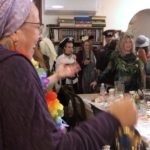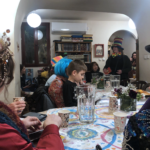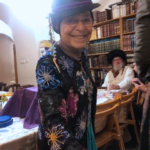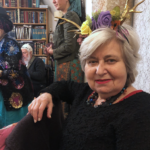Nestled in the heart of Jerusalem, where ancient cobblestone streets blend with modern vibrancy, lies a one-of-a-kind celebration: Jerusalem’s Unique Purim Celebration. This annual event flawlessly interweaves the energy of festivity with the richness of tradition, resulting in a captivating blend that encapsulates the essence of this beloved holiday.
Purim is observed globally on the 14th day of the Jewish month of Adar. However, due to its classification as a “walled city” in sacred texts, the celebration in Jerusalem unfolds a day later than elsewhere. On the evenings of Wednesday and Thursday, March 6 and 7, the vibrant spirit of Purim manifested in costumes, parades, festive meals, and lively gatherings throughout the streets of Jerusalem.
While non-Jews may draw parallels between Purim and festivities like Mardi Gras or Halloween due to the shared theme of costumed revelry, the essence of Purim transcends mere merriment. This Jewish holiday is rooted in deep spiritual and meaningful traditions and encompasses material and spiritual dimensions.
The material celebration is a spectacle enjoyed by people of all ages, featuring enthusiastic participation in costume-wearing, impromptu plays, the exchange of food gifts known as Shalach Manot, and culminating in a joyous family meal, a seudah in the late afternoon before the conclusion of the holiday.
The spiritual facet revolves around the Hebrew reading of the Megillah, narrating the Purim story. Notably, women hold a special connection to Purim, as listening to the Megillah is one of the few commandments specifically incumbent upon them. Queen Esther, the text’s heroine, further emphasizes women’s significance in this celebration.
The Megillah is chanted in synagogues or private homes, ensuring widespread participation in the communal listening experience. This year, I attended the evening Megillah reading at Simhat Shlomo, my former Yeshiva in Nahlaot, near the bustling Jerusalem open-air market, the Shuk. The scene in the Shuk was electrifying, with open stalls selling customary Purim masks and treats, restaurants resonating with music, and people dancing into the night. The infectious merriment even infiltrated a cell phone service store in a Jerusalem mall where I happened to be.
I seized the opportunity to record videos within the Yeshiva during the Megillah reading. Now, immersed in Purim’s vibrant spirit, they truly embrace the festive atmosphere.
A diverse assembly of men, women, and children eagerly gathered, anticipating the arrival of their Megillah reader, Rabbi Leibish Hundert. In the meantime, they entertained themselves with lively tales and joyful singing.
With anticipation in the air, Leibish commenced the Megillah reading.
In the afternoon, I was graciously invited to join my nephew, niece, and other family members for a delightful Purim feast, where we shared laughter, exchanged stories, and savoured traditional delicacies.
For those seeking additional Purim Torah, I recommend exploring an earlier blog post, “What Purim Can Teach Us Today.”
- Cell phone store
- Megillah reading
- A shared Seudah
Jerusalem’s Purim Celebration is a testament to its blend of festivity and tradition, seen in vibrant streets, joyous gatherings, and spiritual practices. This annual event goes beyond mere merriment, exploring the holiday’s cultural and spiritual significance. Each part adds to Jerusalem’s Purim experience, from Megillah readings to costume parades. It reminds us of Purim’s legacy, uniting communities in celebration and reflection.






